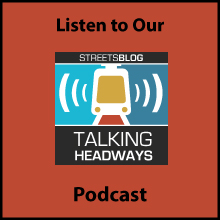The Overhead Wire Daily | Package for You Sir
July 24, 2024
On our most recent Mondays Show with Chrissy Mancini Nichols of Walker Consultants we talked about the most interesting news shared here at the newsletter over the last few weeks. As we were discussing Japan’s big idea for a massive freight conveyor belt between Osaka and Tokyo, Chrissy brought up something interesting I don’t think we hear about much in the media related to the passenger transportation space, which is first mile/last mile freight impacts.
Chrissy mentioned that she’s working on a project in the central valley here in California where they are looking at transit but ultimately there’s so much freight, any passenger enhancements like bus rapid transit are going to have limited impacts on the crush of vehicles transporting produce and other goods.
One potential solution could be these urban delivery hubs which allow long haul truckers to drop their cargo on the edges of urban areas, allowing them to be more efficient with their time by reducing unpaid idling and urban trips. The system has been in use for a few decades by the largest shippers, but it depends on large volumes that only companies like Amazon or Target can muster.
But as mentioned in the Transport Topics item linked above, it could be possible to form a metro area logistics hub where long haul trucks can drop their shipments and have it sorted by a third party logistics company or association for transfer to the last mile by local delivery companies that tend to be mom and pops.
There are several benefits to this kind of urban delivery hub through association which include the use of shorter haul electric vehicles and a reduction in large truck highway miles in urban areas. The existence of these hubs should even negate the need for additional highway lanes through cities says Penn professor Steve Viscelli.
While that solves perhaps a larger long distance issue like Tokyo is trying to solve with a conveyor belt, these hubs are likely to generate massive amounts of local trips ,and stops too, which generate congestion on local streets. We often talk about pricing parking and curb space to deal with this crush, but Chrissy’s numbers from setting up cameras to watch curbs all over the country suggest that 70% of stops to drop off packages or run an errand are less than 15 minutes and 20% of stops are between two and five minutes. Lots of people are trying to access a small amount of space but in a limited amount of time.
What this tells me is that we need to be thinking critically about how our streets and curbs are being used, for how long, and by whom. In many cities we are already dealing with a shortage of street space and as more delivery systems including ride hail take up more of it, we really need to expand our rules and priorities around access to encompass not just passengers but also goods. It may just be that we need to rethink the traditional way we look at streets.
***
For this intro post and more news in your inbox every morning, sign up for a two week free trial of The Overhead Wire Daily, our popular newsletter established in 2006.







